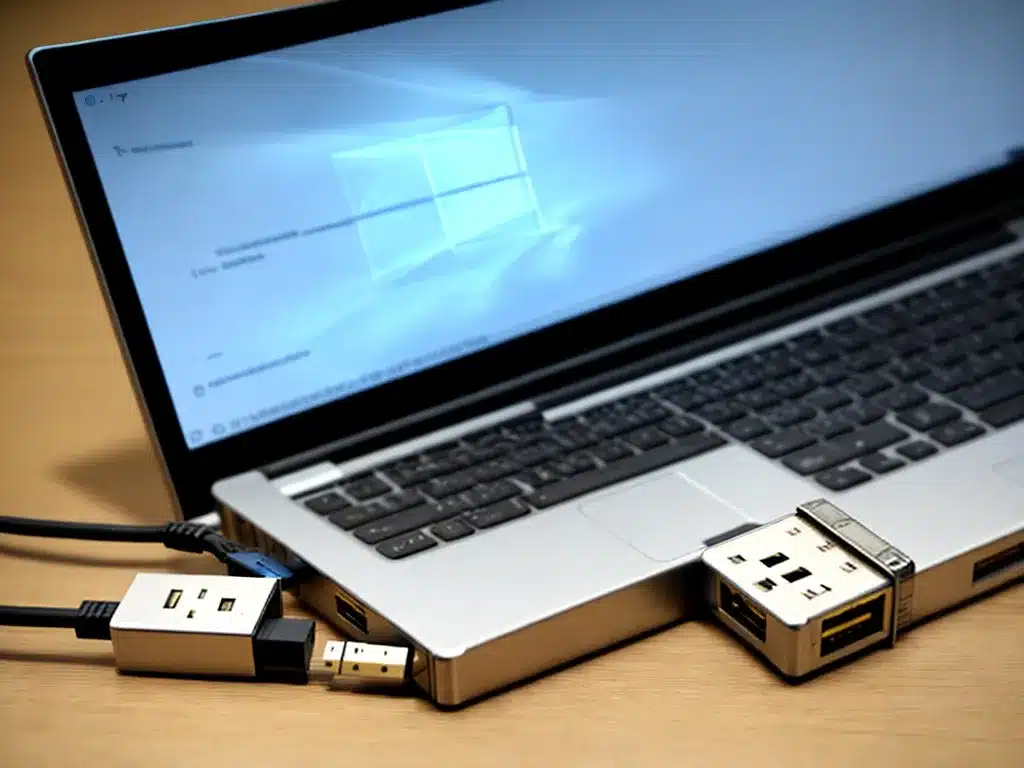
USB devices like flash drives, external hard drives, keyboards, mice, webcams, and more are convenient ways to expand your computer’s capabilities. However, sometimes these devices don’t work properly with Windows. Here are some of the most common causes of USB device problems in Windows and how to fix them:
Driver Issues
One of the most common causes of USB device problems is outdated, corrupt, or missing drivers. Drivers are software programs that allow Windows to communicate with the USB device. Here are some ways driver issues can cause problems:
Outdated Drivers
If you upgrade your version of Windows or update other hardware and software on your computer, it can make your existing USB drivers outdated. Outdated drivers may partially work but can cause intermittent problems.
To fix this, go to Device Manager, find the USB device, right-click it, and select Update Driver. This will install the latest driver for that device.
Corrupt Drivers
Corrupt drivers can happen over time as drivers get damaged, especially from an improper shutdown or disconnecting devices without ejecting them first. Corrupt drivers won’t work properly and may cause errors.
Uninstalling the device drivers and reinstalling them can often fix driver corruption. You may also need to try uninstalling the device from Device Manager, scanning for hardware changes, and letting Windows reinstall the drivers.
Missing Drivers
Sometimes Windows fails to install the proper drivers for a USB device, usually for newer or more obscure devices. The device will show up in Device Manager as an unknown device with a warning symbol.
You’ll need to download the latest drivers for that specific device from the manufacturer’s website and manually install them.
Power Issues
USB devices need consistent, adequate power to function properly. Power-related problems like these can occur:
-
Insufficient power – Using long USB extensions cables or connecting multiple high-power devices to the same port can draw too much power. This can cause devices to fail or connect/disconnect repeatedly.
-
Power surges – Unstable power from the USB port may damage devices or lead to performance issues.
-
Using passive USB hubs – Passive hubs don’t amplify power, so connecting multiple devices may overload the power delivery.
Solutions include:
- Connect the device directly to the USB port or use an active powered hub
- Try different USB ports – some provide more power
- Use a shorter/higher-quality USB cable
Hardware Failures
Like any hardware, USB devices and ports can sometimes fail due to:
- Loose connections – Disconnect and reconnect the USB cable to re-seat the connection
- Port/device damage – Physical damage requires replacement of the device or motherboard
- Overheating – Ensure the device has adequate ventilation according to its specifications
If only one USB port fails, it may just need to be cleaned of debris or replaced if damaged. Multiple failed ports indicate a problem with the USB controller which may require motherboard replacement.
Incorrect USB Port Type
There are different types of USB ports and connectors. Plugging a device into the wrong port can prevent it from working properly:
- USB 2.0 vs USB 3.0 – USB 3 devices will work in USB 2 ports but with reduced bandwidth. USB 2 devices in USB 3 ports are fine.
- USB-A vs USB-C – You need the correct cable/adapter to connect these differently shaped ports.
- USB 3.1/3.2 Gen 1 vs Gen 2 – Faster Gen 2 devices may connect but with limited speed in Gen 1 ports.
Check your device and port types and use the appropriate cable or adapter if needed. Also try different ports in case a port is damaged.
Disabled USB Ports in BIOS
If no USB devices are recognized at all, the USB ports may be disabled in the BIOS. Reboot into BIOS setup and look for a setting like “USB Controller” or “Legacy USB Support” and enable it.
Conflict With Other Devices
Very rarely, other devices like expansion cards or converters may conflict with USB and cause connectivity issues. If you recently installed another new device before the USB problems started, try disabling/removing that device as a test.
Updating BIOS, chipset, and other system drivers can also help resolve conflicts.
Problems With Windows Itself
In some cases, the core Windows USB drivers and services may become damaged. This prevents proper communication with USB devices system-wide.
Try scanning for new hardware in Device Manager, reinstalling USB drivers, and resetting/rebuilding the USB hub stack using DevCon commands.
As a last resort, repair install or reset Windows while keeping personal files to refresh the OS system files.
Summary
USB devices not working properly can stem from driver problems, power issues, hardware failures, port mismatches, BIOS settings, device conflicts, or Windows system file corruption. Strategically troubleshooting the different possibilities can help identify and fix the specific problem. Be sure to keep your drivers and OS updated and use quality cables/hubs to avoid many common USB issues.












